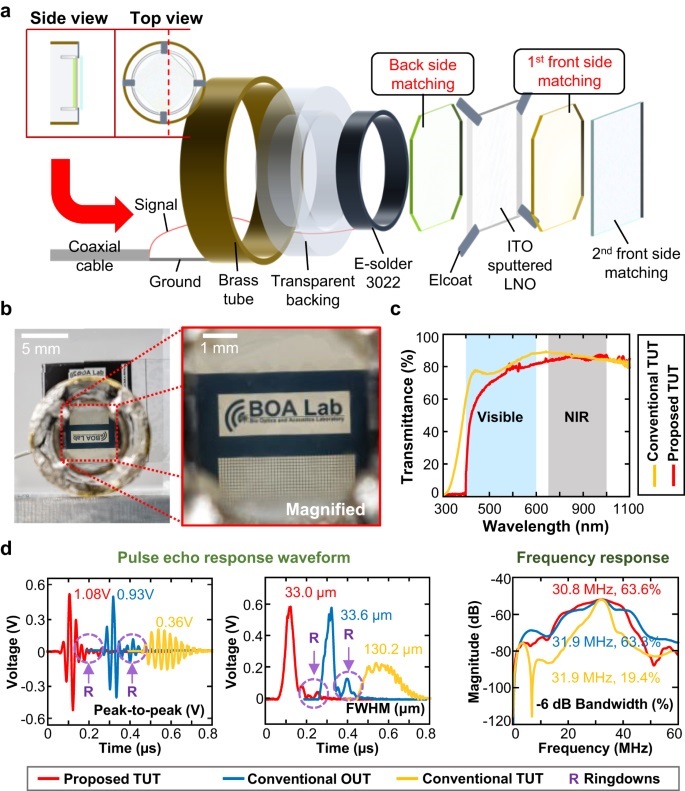Ultrasensitive Broadband Transparent Ultrasound Transducer Enhances Medical Diagnosis
Posted on 18 Mar 2024
The ultrasound-photoacoustic dual-modal imaging system combines molecular imaging contrast with ultrasound imaging. It can display molecular and structural details inside the body in real time without using ionizing radiation. This feature makes it promising for enhancing medical diagnoses by offering a variety of physiological and histological details, leading to more accurate and safer patient care. However, integrating optical and ultrasound pathways often reduces the efficiency of traditional ultrasound transducers. Thus, developing a transducer that is capable of simple and seamless integration is vital for its real-world application. Researchers have now tackled these issues faced in conventional ultrasound-photoacoustic systems by developing a high-performing, transparent ultrasonic transducer (TUT).
An ultrasound transducer either transmits or receives ultrasound. Conventional ultrasound transducers are made of several opaque layers to optimize acoustic performance, but this design cannot be seamlessly integrated into light pathways. This restriction reduces the effectiveness of both the optical and ultrasound systems. Although recent studies have investigated the use of transparent materials for TUTs to solve this problem, finding a balance between transparency and optimal acoustic performance across the transducer layers remains a challenge. In new research conducted at Pohang University of Science and Technology (POSTECH, Pohang, South Korea), the researchers demonstrated a transparent material made from a mix of silicon dioxide (SiO2) and epoxy, which they used to create the novel TUT.

This cutting-edge TUT demonstrates remarkable optical clarity (over 80%) and maintains the same bandwidth (±30% at the center frequency) as conventional opaque ultrasound transducers. When used in the ultrasound-photoacoustic dual-modal system, the novel TUT achieved depth-to-resolution ratios exceeding 500 for ultrasound imaging and 370 for photoacoustic imaging—rates three to six times greater than previous photoacoustic systems. Importantly, this study surpasses the traditional depth-to-resolution ratio limit of 200 in photoacoustic research, reaching 370. Furthermore, this imaging system successfully performed detailed structural and functional imaging in live animals and humans, indicating its broad application potential.
"The application of this technology extends across various medical devices, encompassing tasks like using light stimulation for cell manipulation, employing laser surgery for tumor removal, and employing ultrasound for the examination of residual tissue,” said POSTECH Professor Chulhong Kim. “Our aspiration is that this research will be beneficial in diverse fields, including those employing ultrasound and optical sensors such as mobile devices and robotics."
Related Links:
POSTECH














